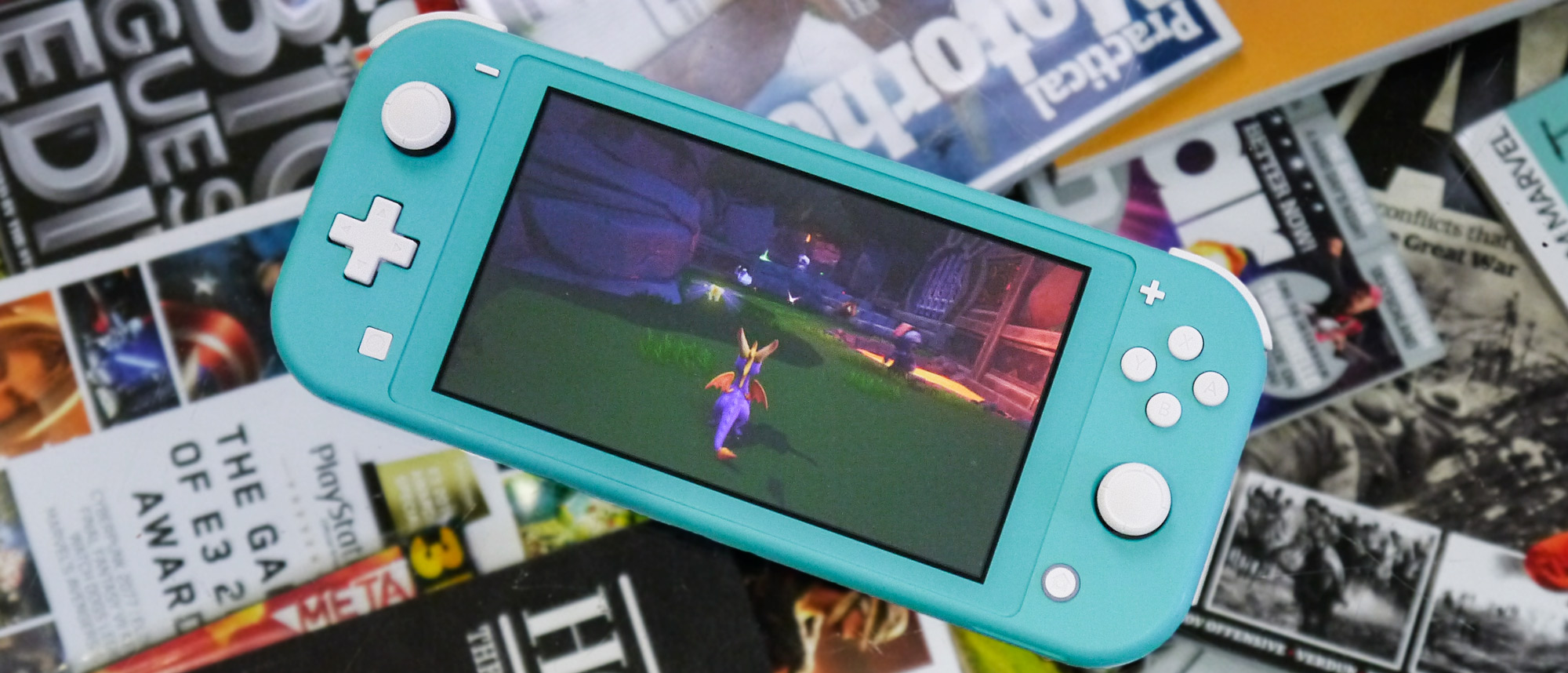TechRadar Verdict
The Nintendo Switch Lite is a great, compact device for those who aren't a fan of (or simply never use) the original Switch's docked mode. The design is more comfortable for portable gaming than the Switch, while boasting the same performance.
Pros
- +
Lighter and smaller
- +
More portable
- +
Nice selection of colors
- +
Comfortable design
Cons
- -
Limited to handheld games
- -
Still not as comfortable as 3DS
Why you can trust TechRadar
The Nintendo Switch Lite is a compact alternative to the standard Nintendo Switch, making it a perfect travel companion for any gamer on the go. Despite its more compact size, it still packs some incredibly impressive capabilities and doesn’t stray from its standard counterpart in terms of performance, so it’s a worthwhile addition to your setup if you’re looking for something slightly smaller.
For example, the Nintendo Switch Lite is significantly lighter and slightly smaller than the standard console, making it a convenient portable companion. However, if you prefer the flexibility of playing the Nintendo Switch or Nintendo Switch OLED handheld or docked, then the Nintendo Switch Lite might be one to miss as it doesn't include, nor work with, Nintendo Switch docks.
But if you’re a gamer on the go, then there are a lot of perks with the Nintendo Switch Lite. It has the potential to offer a fantastic alternative to the standard console due to its lighter weight and smaller size. But as with any new release, there are pros and cons to consider before you make the Switch.
Nintendo Switch Lite: cut to the chase
- What is it? A more compact, handheld-only version of the Nintendo Switch
- When does it come out? Out now
- What does it cost? $199.99 / £199.99 / AU$329.95
Nintendo Switch Lite: price and release date
Nintendo Switch Lite launched over two years on from the original Switch model. Arriving on September 20, 2019, the Lite may have ditched the ability to dock your Switch to a TV, but it came with a significant price cut too.
Unlike the standard Switch, which these days retails for £259.99 / $259.99 / AU$435, the Nintendo Switch Lite comes in at $199.99 / £199.99 / AU$329.95. So, if you can accept this trade-off in the long term, a substantial saving can be made by opting for the handheld-only model.
Fortunately, Nintendo has advised that there won't be a price hike just yet for the Nintendo Switch Lite, unlike the recent ones for Oculus Quest 2 and PS5 that were blamed on global inflation. So, if you've not yet picked up a Switch Lite, there's no need to rush.
Nintendo Switch Lite: design
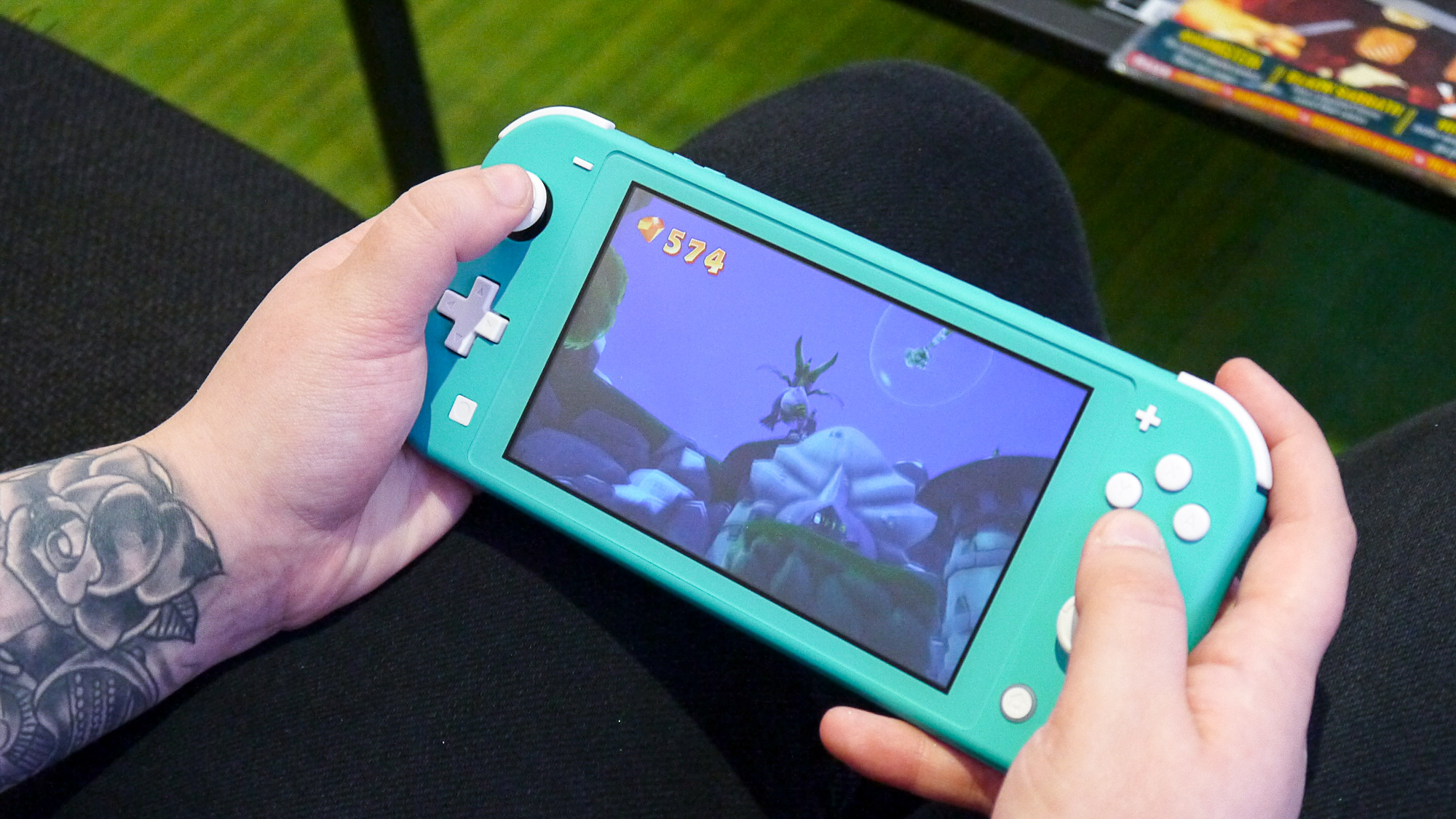
The main difference between the Nintendo Switch Lite and the original Nintendo Switch is that the Switch Lite is solely a handheld device. Therefore, the Switch Lite is much more compact and lighter than its predecessor. That comparison also applies to the Nintendo Switch OLED, which is slightly larger than the original Switch.
The Switch Lite measures 91.1mm x 208mm x 13.9mm and weighs 275g, compared to the 102mm x 239mm x 13.9mm dimensions and 297g weight of the original Switch. This means the device comes with a smaller LCD touch screen, measuring just 5.5 inches but still providing 1280 x 720 pixels.
In other words, it's a smaller screen than the original Switch's 6.2 inches, but with the exact resolution – so you're not losing anything regarding picture quality. In fact, this gives the Switch Lite a pixel density of 267 pixels per inch (ppi), a bit sharper than the original Switch's 236 ppi.
However, the trade-off is that it can sometimes be difficult to read small in-game writing on a smaller screen. We had to hold the console closer to our faces to read some text. It's a minor issue but slightly odd for onlookers on a morning commute.
Where the Switch Lite truly shines is that it feels more comfortable as a handheld device. Due to its smaller size, it's more portable and convenient to use on the go than the original Switch: you need less elbow room, and it could probably fit in quite a large pocket.
As someone with small hands, this writer is aware that the original Switch can be uncomfortable to use in handheld mode; while relatively compact, it's still large by handheld standards. By contrast, the Lite is considerably more portable and fits snugly in your hands. However, it remains wide and doesn't feel quite as comfortable as the 3DS did.
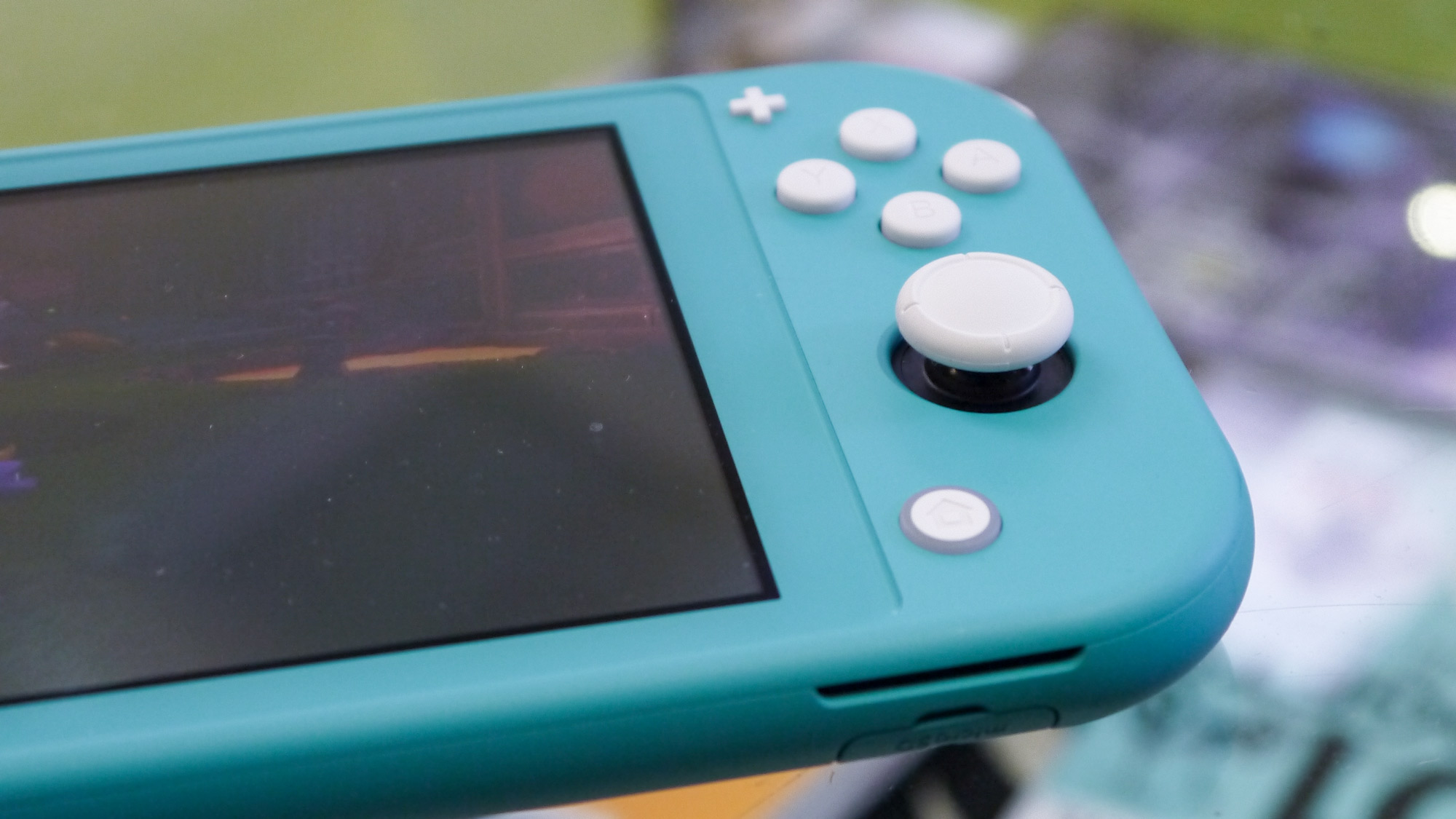
In addition, the Switch Lite comes with integrated controls rather than Joy-Cons. While you can connect up to four separate Joy-Cons wirelessly, you won't get an additional pair out of the box with the Lite.
Despite the controllers being fixed, they offer mainly the same buttons as the original Switch – except the left, right, up, and down buttons, which have been replaced by a D-Pad, or Plus Control Pad, as Nintendo calls it. The D-Pad replacement feels natural, like it's always been there – and is undoubtedly more suited to handheld play.
The ZL and ZR triggers feel perfect and help cement that snug fit. However, the L and R buttons are thinner than on the original Switch. Arguably a bit too thin, as we sometimes found our fingers slipping off them. Both models also allow wireless connectivity, Bluetooth headphones, and MicroSD cards to increase the 32GB internal storage.
So, you aren't losing too many features aside from docked mode – which means no TV play. Due to the Switch Lite only being a handheld device, the console doesn't come with a dock, HDMI cable or kickstand. All you get in the box is the device itself and a charger – simple. The Switch Lite isn't meant to connect to a TV – and while we tested it out with our own HDMI cable anyway, Lite doesn't support this.
The Switch Lite also comes in turquoise, coral, blue, and yellow models – shaking up the gray and neon Switch models we've been eyeballing for the past two years. For anyone after something a little more special, Nintendo's also put out various special editions over the years, like the Dialga and Palkia variant for Pokemon fans.
Nintendo Switch Lite: performance
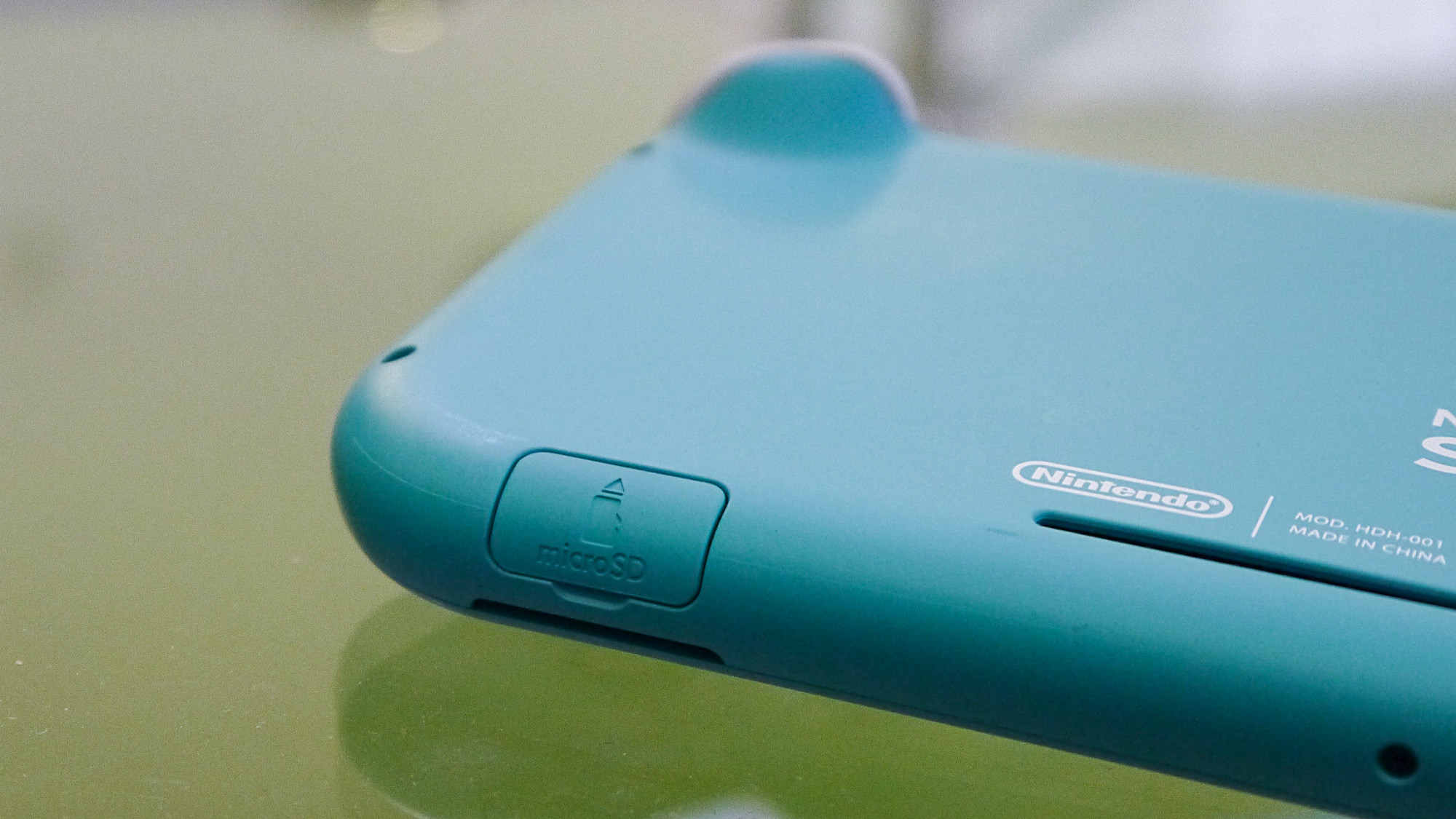
The Nintendo Switch Lite has essentially the same performance as the Switch, except that the Lite has a slightly longer battery life of 3-7 hours, about 30 minutes more than the original Switch, and 1-2 hours less than the upgraded Switch model entering stores (although Nintendo warns that this depends on the games you play).
However, it is definitely worth noting that the Switch Lite does not come with HD Rumble or an IR Motion Camera. The device is made to play handheld games solely, and will therefore only play the best Nintendo Switch games that support handheld mode.
That's not to say you can't play games which don't support handheld mode, but you would have to wirelessly connect Joy-Cons for this to work (and buy them plus their charging grip separately). We found that connecting Joy-Cons allows you to use HD Rumble.
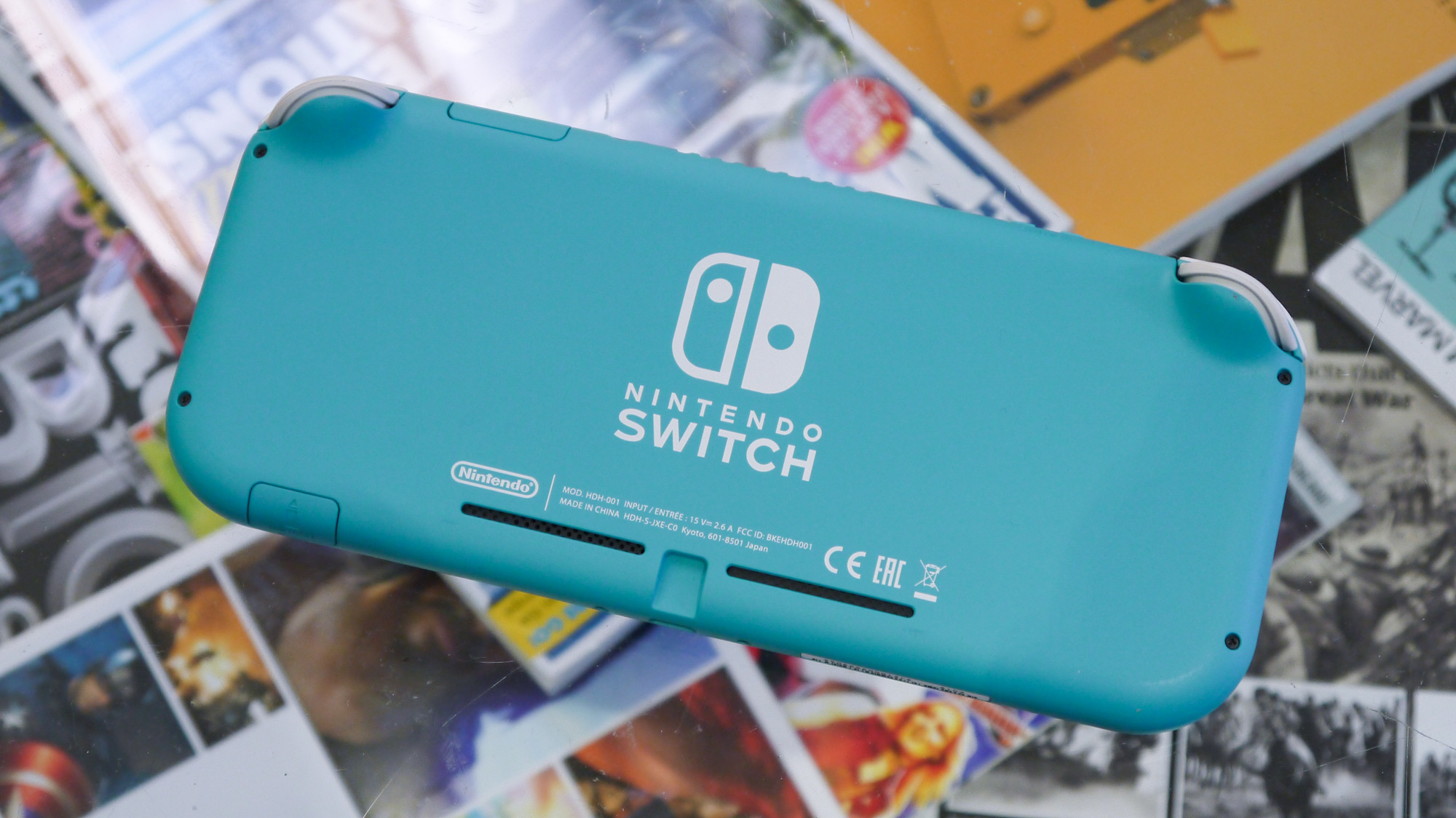
At a hands-on preview event, a Nintendo representative explained that the console would be compatible with more devices than just the Joy-Cons, but what exactly would not be revealed until a later date.
The following games are unsuitable for the Switch Lite: 1-2 Switch, Super Mario Party, and Nintendo Labo accessory kits. While games which require Rumble could be played with Joy-Cons attached, we found that trying to play with more than one person on the Lite's small screen isn't exactly practical - so we wouldn't advise trying to take on party games as the device wasn't built for this.
Despite missing these two features, the Switch Lite still has an accelerometer, gyroscope, and brightness sensor. That means you can still use gyro controls in games like Breath of the Wild – tilting the console to aim the bow, for instance – and the screen's brightness adjusts depending on your surroundings.
Wireless online play still means you can play with friends (not necessarily couch co-op), as we could easily play Mario Kart 8 Deluxe online. If anything, all the games we played felt less clunky due to the compact nature of the device.
Nintendo Switch Lite: verdict

The Nintendo Switch Lite is the perfect console for those who prefer comfortable handheld gaming and have never been sold by the Nintendo Switch's docked mode. The compact and lighter device feels considerably better than its predecessor and is much less clunky.
When it comes to portable gaming, the Switch Lite is easier to transport, takes up less elbow space on commutes and fits in your hands much more snugly. It's not quite as comfortable as the New Nintendo 3DS XL, but packing in the same performance as the Switch means we can let that slide.
However, anyone thinking about picking up the Switch Lite needs to focus on the fact that it is intended to focus on solo, portable play, and the number of games which are compatible with the device is slightly less than the original Switch. It is not simply a smaller Switch model.
But suppose you're looking for a more comfortable, lighter and overall better-looking handheld device (and a range of snazzy colors) and don't particularly care about losing the few games we've listed. In that case, the Nintendo Switch Lite is a great match.
Nintendo Switch Lite: recent updates
Nintendo’s continued building upon the Switch since the Lite's launch. Alongside the Nintendo Switch OLED launch, it's also seen continued system updates.
Between reminding us to use our Nintendo Switch reward points and adding Nintendo Switch software folders to better organize our library of games, a Nintendo Switch Online achievements system also went live. Elsewhere, you can now add friends through the Nintendo Switch Online companion app, available on iOS and Android mobiles. It means adding friends is easier than ever on Nintendo Switch.
There’s no end of upcoming games to look forward to, but if you’re after the older classics, fear not. Thanks to the Nintendo Switch Online subscription service, there’s a continually growing library of NES and SNES games to play. If you’ve opted for the Expansion Pack, there’s Sega Genesis/Mega Drive and more N64 games are coming. We'd say keep your Nintendo Switch Online subscription for now.
Looking for advice on how to connect Nintendo Switch to your TV? After some recommendations for Nintendo Switch SD cards? We've got you covered.
An award-winning games journalist, with seven years of experience in games journalism and a degree in journalism from City University, London, Vic brings experience from IGN, Eurogamer, The Telegraph, VG247, Dot Esports and more to the TechRadar table. You may have even heard her on the radio or speaking on a panel, as she’s previously appeared on BBC Radio 4, BBC Radio 5, BBC Radio Ulster and more. Not only is Vic passionate about games, but she's appeared on both panels and podcasts to discuss mental health awareness. Make sure to follow her on Twitter for more.
- Henry Stockdale
- Kara PhillipsEvergreen Writer
